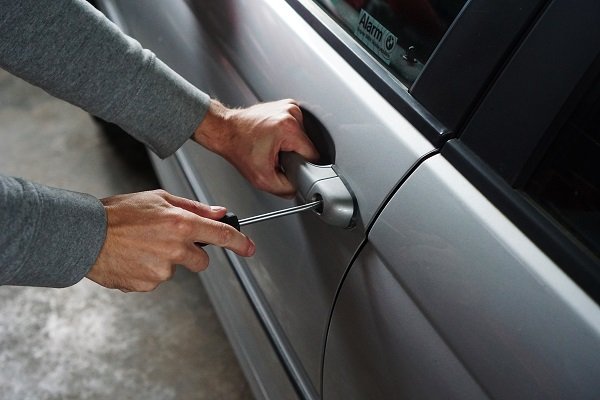Robberies and car thefts happen frequently throughout Brazil. The problem is greater, but not exclusive, to large urban centers. The resumption of society’s regular routine, with the decrease in cases of Covid-19 and the end of social isolation, increases the number of vehicle robbery and theft records and brought back the feeling of insecurity to transit through Brazil streets and roads.
This Content Is Only For Subscribers
To unlock this content, subscribe to INTERLIRA Reports.
However, new issues should be taken into consideration: traditionally, vehicle thefts focused on in popular, cheaper, and compact cars. Now, this trend has changed along with consumer tastes, and as the public is increasingly looking for SUVs and pickups, industries have offered more models in this segment, the criminals’ attention is following this movement.
Difference Between Robbery and Theft
First, when talking about robberies, it happens when someone uses threat or violence to commit the crime – in this case, taking the vehicle. Theft is when the item is taken without threat or violence.
According to Rodrigo Boutti, head of operations at the insurance company Ituran, the theft usually takes place where the criminal has the guarantee that the detection of the crime will take time. Train stations, churches and football stadiums are some of the favorite places for gangs specializing in theft.
Robberies, on the other hand, are registered more quickly since the victim is at the scene during the crime. According to Ituran’s head of operations, bandits specializing in robberies prefer places where the victim will stay for a short time – such as pharmacies and supermarkets – to approach them when boarding the vehicle. This is because criminals look for the surprise factor.
Another difference between these types of crime is in the intention of the criminal. According to the Ituran executive, cars that are targeted by thieves are normally dismantled to supply the illegal parts market. In case of robbery, the vehicle is mainly be used for escapes or to be used to perpetrate another crime.
Brazil
Across Brazil, vehicle thefts and robberies increased last year (2022) compared to 2021. According to data from the Justice and Public Security Ministry, almost 1,000 cars were stolen or robbed per day in the country in 2022, i.e. 41 vehicles per hour, representing an increase of almost 12% compared to 2021.
The number of thefts is greater than the number of robberies. Last year, almost 220,000 vehicles were thieved in the country – 18% more than in 2021. While robberies increased by 3.5% in the same period, from 136,461 in 2021 to 141,227 in 2022.
According to the coordinator of the Violence Analysis Laboratory (LAV-UERJ), Doriam Borges, the number of vehicle robberies and thefts has been falling since 2017 and, with the pandemic, suffered an even more significant drop, mainly due to the change in routines. Now, as the new numbers show, they have risen again and are quickly returning to pre-pandemic levels.
Rafael Alcadipani, a member of the Brazilian Public Security Forum, believes that the first use that criminals make is dismantling the vehicle to sell the parts. In some states, like São Paulo, there is specific legislation against dismantling, but there are states where no legislation exist, making life easier for criminals.
The State of São Paulo Recorded the Highest Number of Cases
In 2023, from January to March, were registered 3,870 cases of vehicle robbery and 10,134 of vehicle thefts. In 2022, there were 3,547 cases of robbery and 9,545 cases of theft. This represents, for the first quarter of 2023, a 9% increase in robbery and 6% in thefts.

The increase of vehicles robbery and theft in São Paulo is directly motivated by the consumption of parts used in illegal dismantling, due to the economic recession. Other reasons are the lack of electronic inputs in the replacement market (which leads criminals to look for them in cars) and the aging of the fleet due to the increase in the price of new cars. New cars and motorcycles have become very expensive and there is also a lack of zero-kilometres models due to the shortage of microchips. As a result, the fleet is aging and the demand for replacement parts for used vehicles has grown, including components supplied by illegal dismantling.
The 10 most targeted cars in São Paulo
1º Volkswagen Gol
2º Fiat Uno
3º Chevrolet Onix
4º Ford Ka
5º Chevrolet Corsa
6º Hyundai HB20
7º Fiat Palio
8º Volkswagen Fox
9º Toyota Hilux
10º Chevrolet Prism
With the objective of combating robberies and thefts of vehicles and cargo, dismantling, reception of stolen cars, concealment, etc. the Secretariat of Public Security, through the Integrated Command and Control Center (CICC) and the Civil Police, created Operation Box, jointly with the Detran (Dept of Transport). The focus is on the supervision of dismantling, to combat clandestine establishments and also controlling activities of parts sellers accredited by the Detran.
It is important to point out that clandestine and irregular dismantling market often end up offering the population so-called “pieces of blood”, because their activities, in general, are fueled by the proceeds of other crimes, such as vehicle theft, diversion of cargo, larceny, corruption, drug trafficking and other crimes that can cause harm to society.
Rio de Janeiro
According to data released by the Rio de Janeiro Public Security Institute (ISP), 14,064 vehicles were robbed in Rio de Janeiro throughout 2022, an increase of 16% when compared to the year before (2021). There was also an increase in the number of car thefts — 7,534 cases registered in the same period, which is equivalent to an increase of 18%. And the criminal gears continue at full speed: in January, more than 3,000 vehicles were robbed or stolen in the city, the equivalent of 4 cars per hour.

According to authorities, the increase reflects a range of factors, starting with the fact that the population has returned to circulating normally after the pandemic ends. The situation gets worse when we think about other issues related to public security in Rio. Gangs, notoriously focused on drug trafficking, are diversifying into other crimes. Traffickers in Rio began to copy the São Paulo model, increasing their portfolio of criminal activities, says anthropologist Paulo Storani, former Bope captain, Rio de Janeiro’s Military Police elite troop. The cargo and vehicles theft are part of the new expanded list of crimes committed by criminals in the state.
By taking a vehicle, criminals manage to make a profit in numerous ways, including reselling parts, cloning the license plate, and even demanding money payment to rescue the car. This modus operandi is common in gangs such as the branch of the red command in Complexo do Lins, North Zone, one of the most powerful drug gangs in Rio, which commits robberies in neighbourhoods such as Tijuca, Engenho Novo, Méier, Jacarepaguá, Barra and Recreio. The criminals’ performance is so intense that it interferes with the rates of the entire region — among the ten police stations with the highest increase in crimes in 2022, eight are located precisely in the north zone of Rio de Janeiro.
The state government has struggled to contain the problem. Last year, Civil Police were able to recover only 31% of stolen cars — a number well below the usual average of 50%. The lower rate not only conveys the feeling of impunity, but it also reflects in the insurance market. According to IBGE data, the value of policies has accumulated a 32% increase in the last twelve months. Insurance companies follow the growth curve of these thefts very carefully, says Ronaldo Vilela, executive director of the Union of Insurance Companies (SindSeg-RJ).
The fight against crime consists of intelligence actions to dismantle the gangs hidden in Rio’s favelas. It would also be necessary to improve the legislation that punishes the ilegal dismantling of cars, the reception and concealment of stolen parts, currently considered lax. The Military Police say they have intensified the patrolling in the streets. It also informs that, in January, there was a drop of 2.6% in this type of crime.
Civil Police, in turn, created the Tourniquet Operation, a task force aimed at arresting vehicles thieves and recovering vehicles. According to investigators, the Vila Aliança favela, West Zone, has become one of the operational bases of a criminal faction that supplies heavy weapons — such as rifles, pistols, and grenades — for vehicles and cargo robberies in various regions of Rio.
Unfortunately, no figures are available regarding most targeted cars in Rio de Janeiro.
Impacts on Economy
Vehicle thefts impact the country’s economy in various ways, they are external events that feed anomalies in the Brazilian economy. An example is when a consumer gives up changing or buying a more expensive new car for fear of becoming a target. Consumers also give up purchasing models and colors that are statistically more targeted by criminals.
In addition, consumers and companies have additional expenses to try to maintain their security, mainly with alarms and shielding. Another important point is that the illegal market for used parts and pieces generates losses both to official stores and industries and to the state, which fails to collect taxes.
According to specialists, it is not possible to combat robbery or theft without implementing intelligence work to find receivers and parts seller of vehicles taken by criminals.
How to prevent robbery and theft of your vehicle?
1. Park in appropriate and well-lit places, when possible close to the guarding gatehouse
2. Do not leave exposed objects of value in the car unattended
3. Use visible and modern security devices (Wheel Lock, GPS tracker with visible sticker …)
4. Do not paste stickers with personal information
5. Make sure the car has been closed when left unattended




